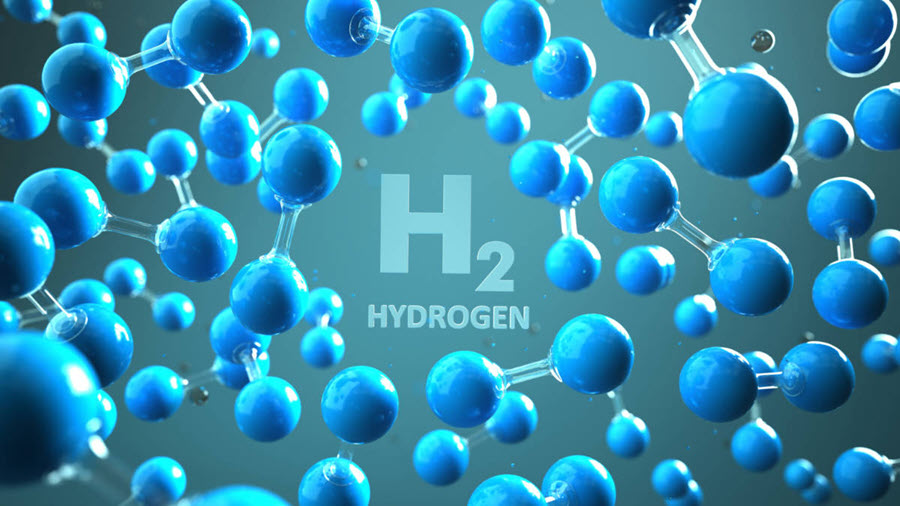
- Experts react to international climate talks
Following international climate talks, Sydney experts from the Faculty of Engineering discuss the future of hydrogen energy, renewables, and advanced manufacturing, and the investment that’s needed to ensure Australia comes out on top.

Energy companies, and state and federal governments are looking to retrofit existing gas pipelines for hydrogen transport. Credit: Pixabay.
Hydrogen could be king, but there’s one big roadblock
Dr Yi-Sheng “Eason” Chen is a researcher and hydrogen expert in the School of Aerospace, Mechanical, and Mechatronic Engineering. He believes hydrogen could transform Australia’s energy market but says there is one big roadblock in the way of a meaningful uptake.
“Hydrogen wreaks havoc in many alloys, leading to embrittlement that can cause catastrophic failure. This is a very serious issue for any industry in which structures are exposed to hydrogen and is a limiting factor for the production, transport, storage, and use of hydrogen in a potential hydrogen economy,” said Dr. Chen.
“The development of materials for a hydrogen economy is a challenge that requires a coherent and coordinated national effort. Addressing this issue requires a long-term investment in the emerging generations of researchers and engineers who will serve the hydrogen energy sector for the next 50 years.”
“There are many skill sets that are required to solve the hydrogen embrittlement problem, but at its core will be metallurgy and metallurgical engineering. In this aspect, Australian researchers are already active and making important new contributions to the hydrogen embrittlement problem.
“For example, to understand exactly how hydrogen interacts with metals at the atomic level – which is the critical information for designing a metal that can better withstand embrittlement – researchers at the University of Sydney have developed a unique microscope that can directly observe hydrogen atoms in metallic samples.
“Australia already has the ingredients for success in the global race for a hydrogen future, but first our universities, industries, and government must work together and lead the world in finding the answer to hydrogen embrittlement. While the path to a hydrogen future isn’t an easy one, if we can solve hydrogen embrittlement we will be much closer to achieving a decarbonised energy portfolio, and creating a new, clean export market in Australia.”
Advanced manufacturing should be at the heart of the shift to renewables
Professor Simon Ringer, who is the Director of Core Research Facilities, believes that a commitment to a net-zero emissions target requires urgent investment in advanced manufacturing.

The Sydney Manufacturing Hub. Credit: University of Sydney
“Not only is this energy discussion all happening in the midst of imperatives from climate change, but it is also happening in the midst of a tremendous scientific and technological disruption: advanced manufacturing,” said Professor Ringer.
“Additive technologies, new materials science, digital design and ’industry 4.0’ are transforming manufacturing. Australia stands to win big – with dividends in terms of great jobs, sovereign capability, and export revenue all there for the taking. So, we need to get our energy mix right from this perspective also.”
Sustainable energy planning must be holistic
Dr Jeremy (Jing) Qiu is a Senior Lecturer from the School of Electrical and Information Engineering, who is an expert in energy planning and electricity markets.
“Energy planning means the process of developing long-range policies to help guide the future of a local, national, regional, or even global energy system. It has played a strong role in setting the framework for regulations in the energy sector, for example, influencing what type of power plants might be built or what prices are charged for electricity,” said Dr. Qiu, whose research aims to identify sustainable energy policy to enable Australia’s low-carbon transition towards energy sustainability.
“Sustainable energy planning takes a more holistic approach to the problem of planning for future energy needs. It is based on a structured decision-making process. My research aims to enhance the reliability and economic efficiency of our electricity supply networks, allowing them to reliably supply quality electricity in a more cost-effective and sustainable manner with advanced engineering and computational methods.”
“This research area is of great significance, as it addresses the environmental impacts of energy consumption and production, particularly considering the threat of global climate change, which is caused largely by emissions of greenhouse gases from the world’s energy systems.
“My current research focuses on transforming Australia into a hydrogen powerhouse by building enabling capacity in hydrogen innovation in a short timeframe and developing a comprehensive value chain energy planning model for possible hydrogen economy scenarios in Australia.”
Source: Sydney School of Aerospace, Mechanical, and Mechatronic Engineering.
Read the most up to date Fuel Cell and Hydrogen Industry news at FuelCellsWorks




